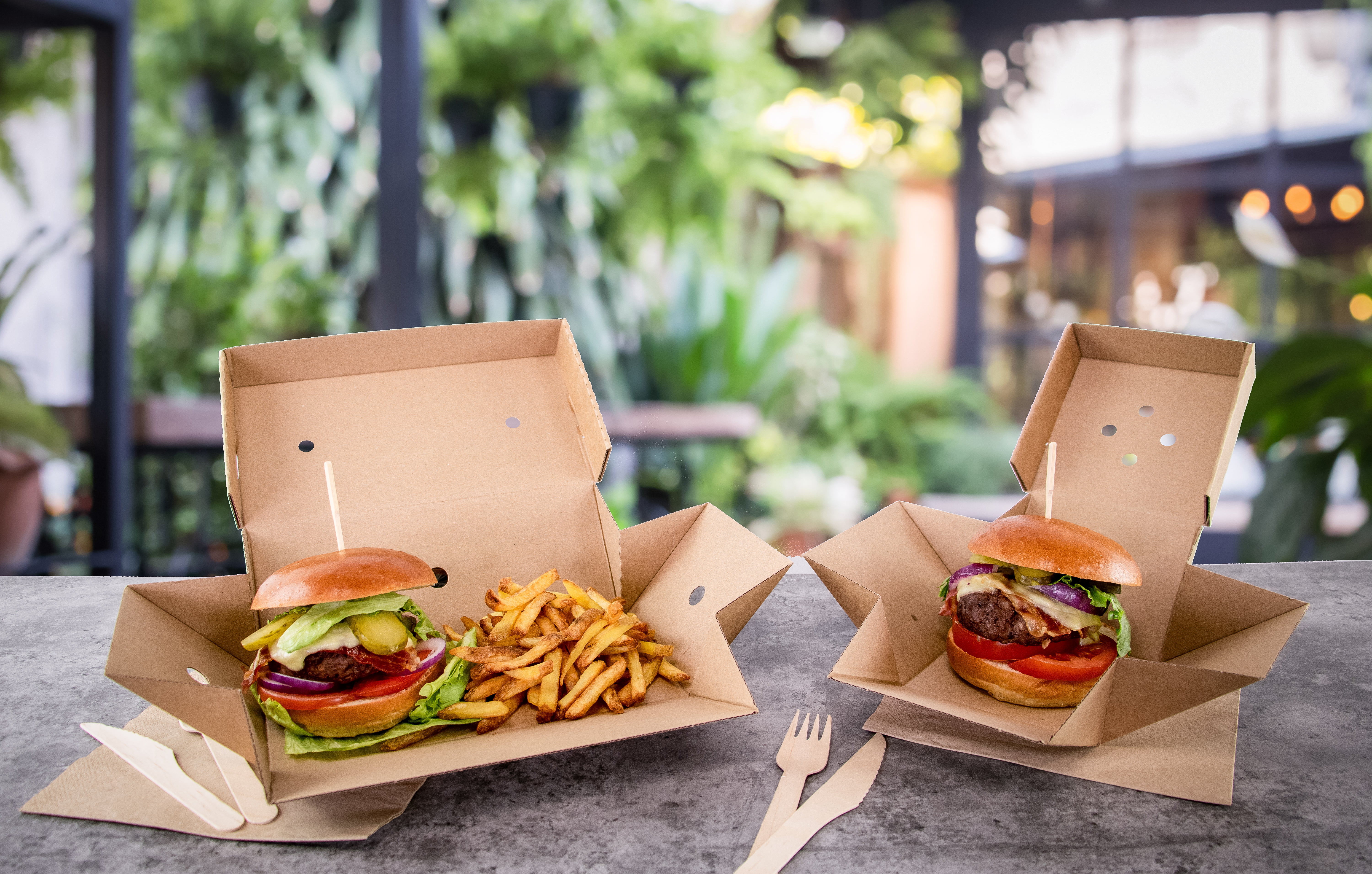Unfortunately, trying to keep on top of all of these elements is a little like spinning plates. Customers might not be comfortable reusing plates, glasses, and cups that others have consumed from previously, for example. The solution could be single-use packaging, but how do you square that with your sustainability and environmental efforts? This blog offers a guide on how to navigate this tricky path.
Use Compostable and Recyclable Packaging
There were great leaps taken in recent years to reduce single-use packaging in the food industry. Then Covid hit and the landscape changed once again. Yes, we are still trying our best to make the right choices for the planet (around half of adults say they take decisions based on sustainability), but the public is also understandably cautious as we emerge from a major public health crisis.
Sharing crockery and cutlery, no matter how rigorous your washing methods, might be off-putting for customers. In addition, many people might only feel comfortable eating and drinking outside, where you might not want them to use the glassware, for example. Another consideration is that you might not want your staff handling customers’ refillable coffee cups, meaning that you could choose to serve takeaway drinks in single-use cups only.
Thankfully, single-use doesn’t have to mean that the item goes to landfill nowadays. We have a range of recyclable and/or compostable plastic glasses, cups, food packaging, and more that allows you to provide these reassuring items without being too concerned about the impact on the environment.
Offering these options helps you keep hygiene and health at the top of the gender, without scrimping on sustainability.
Cut Down Food Miles and Buy Local and Seasonal
One aspect of the post-lockdown world that feeds into sustainability is the reduction in travelling. Many outbreaks of the virus were traced to the movement of people from one place to another and a key element of the government’s advice was to minimise travel where possible.
By buying from local suppliers and creating menus based around seasonal produce, you reduce the need for delivery drivers to make the journey from other parts of the country, minimising the associated risks. It also brings down the overall food miles, cutting down on carbon emissions. Furthermore, you support local businesses that have been hit hard by the pandemic. This is the perfect way to balance health and sustainability.
Adjust the Menu to Use More of the Ingredients
In addition to the point above, deliveries in the UK have been hit by the combination of Covid pings, a general shortage of HGV drivers and issues surrounding EU drivers living and working in the UK after Brexit. This means that many in the hospitality sector are missing out on items in deliveries.
This is an opportunity to create more sustainability in the food industry. Whereas previously we might have used only parts of ingredients to make dishes and then binned the rest, we have to work smarter. Devising menus that use the whole of an ingredient (from the stem to the root, or from the nose to the tail, for example) means that you get more mileage out of the supplies that you do have. You are less reliant on regular deliveries as your ingredients go further than before, and you are making the most of resources, rather than racking up food waste.
If you do find yourself with unused food at the end of the day, there are a number of charities around the country that can distribute these items to people who really need them, helping you do your bit for your local community.
Any More Tips for Sustainability in the Food Industry?
Do you have any more tips for maintaining sustainability in the food industry, especially relating to the health and hygiene concerns that are so important given the situation we find ourselves in? We would love to hear how you have been able to balance all of these different aspects at this difficult time.


